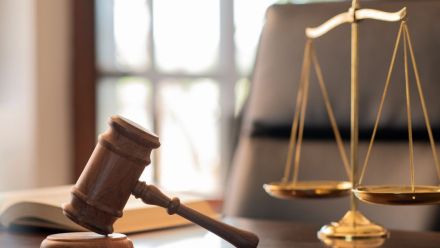Telling the Australian story
Then - A cultural University
In 1965, then şÚÁĎĚěĚĂPro-Chancellor HC 'Nugget' Coombs had a grand vision. He believed that the nation's university should play an important cultural role in Australian life even though at the time şÚÁĎĚěĚĂdid not have an arts or music school.
Despite his economics background, Coombs believed an important part of postwar reconstruction was fostering the arts. He encouraged the idea of bringing artists to the University and supporting them for the time they needed to create their work.
The Creative Arts Fellowship - the first of its kind for an Australian university - was designed to extend the University's reach from research in sciences and humanities to the creative arts. In honour of its founder, it was renamed the HC Coombs Creative Arts Fellowship in 1998.
One of the first Creative Arts Fellows was visual artist Sidney Nolan, whose contribution to the University community was two exhibitions, one of which featured his major work Riverbend, later acquired by şÚÁĎĚěĚĂand still regarded as the most famous treasure in the şÚÁĎĚěĚĂArt Collection.
The work of sculptor Norma Redpath, who was a Fellow in 1972, is the very recognisable installation named Extended column at the front of the şÚÁĎĚěĚĂSchool of Music.
Other notable Creative Arts Fellows have included musician/composer George Dreyfus, film-makers Arthur and Corinne Cantrill, writer/musician Rodney Hall and writer Christina Stead.
Well-known Australian painters Arthur Boyd and Keith Looby both spent time on campus as Fellows in the 1970s. A highlight in 1978 was the appointment of Narritjin Maymuru, the first Indigenous artist to be invited as a Creative Arts Fellow.
Since 1992, Fellows have been hosted at şÚÁĎĚěĚĂby the Schools of Art and Music, which support these nationally recognised artists to make tangible contributions to cultural life on campus, by engaging with students and staff through workshops, performances, exhibitions and concerts.
An important part of taking up a Fellowship is the willingness for artists to work closely with students in their relevant discipline. This willingness was embraced by 2015 Fellow Andrew Farriss, renowned songwriter and INXS founder, who taught and performed regularly with students from the şÚÁĎĚěĚĂSchool of Music.
The Coombs Fellowship has been recognised for the intrinsic role it has played in telling the Australian story through 50 years of creative arts.
The pieces produced have brought to life Coombs' vision that şÚÁĎĚěĚĂshould play an important role in supporting artists and by doing so contribute to the development of the nation's culture and identity.
Now - Understanding who we are
There's nothing in Australia quite like the ANUpoll to tell us about ourselves.
For lead researcher Dr Jill Sheppard it's an opportunity to ask the odd, and occasionally quirky, questions that elicit some interesting responses and insights into Australian society.
"ANUpoll allows us to use data to tell a narrative about Australia, a narrative we can back up with figures and empirical research," she says.
"Time and time again, the poll tends to find that Australians are more tolerant, confident, optimistic and peace loving than they're given credit for."
Now in its tenth year, the ANUpoll has asked Australians to consider their views on topics ranging from climate change to national identity.
Dr Sheppard says results don't always reflect what's reported in the media - one of the more surprising results has been Australians' views on immigration.
"They generally think migrants make a positive contribution to Australian life and their employment opportunities won't suffer due to immigration," she says.
Australians can expect future polls to ask the big questions about tax, personal safety and access to metadata and surveillance.
"In the future, Australians are going to think more and more about the limits of their personal freedoms and the extent to which they are willing to give away their personal freedoms for the notion of a greater good," says Dr Sheppard.
"We hope that ANUpoll can continue to help us understand who we are and the type of country we want to live in."


